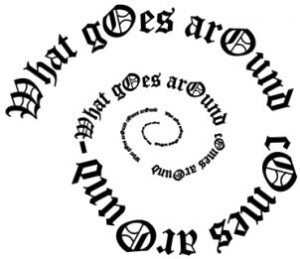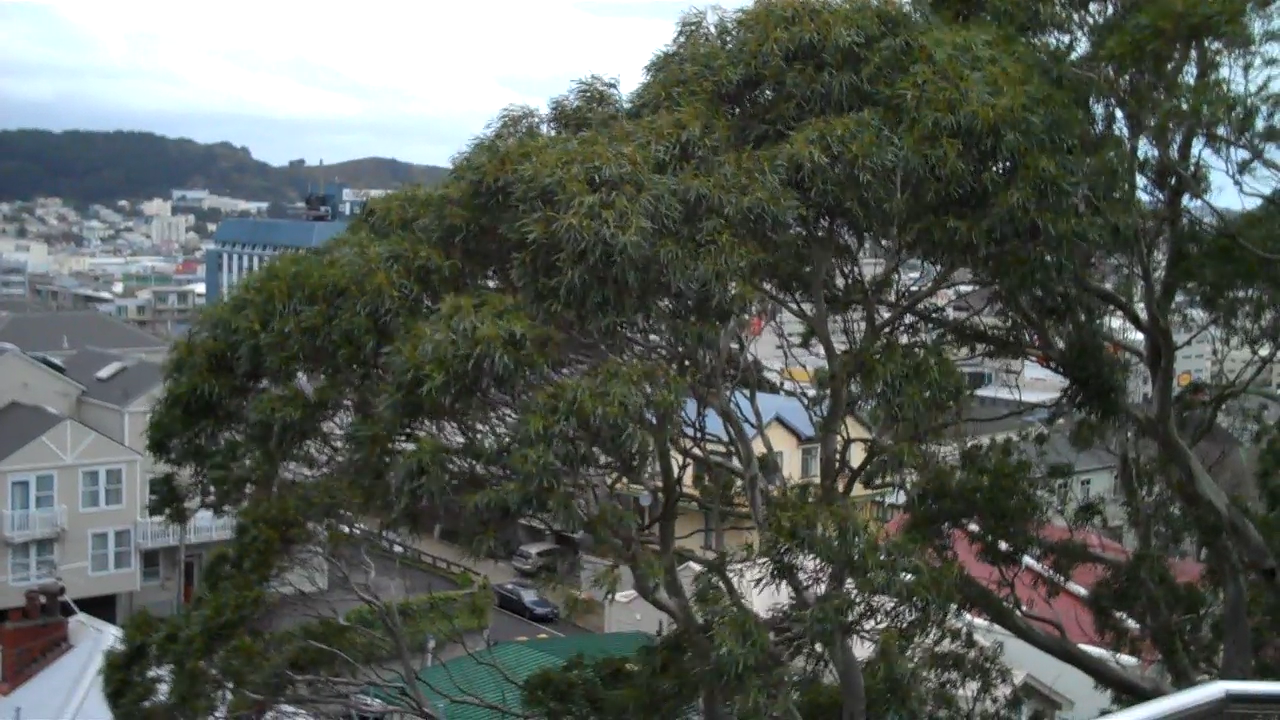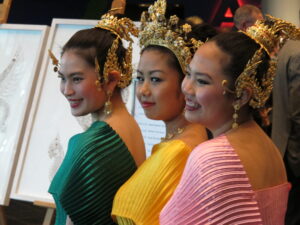We drove 300 miles from Wellington to visit the northeast coastal region of New Zealand, where we expected to see many of the natural wonders of that area. What we found was richer by far, the gregarious embracing people of Wairoa.
Wairoa (pronounced locally, as best we could figure, something like “whyyera”) is a small town of around 5000 people, up the coast from the larger towns of Napier and Hastings, art deco havens destroyed in the 1931 earthquake and rebuilt in the style of the times.
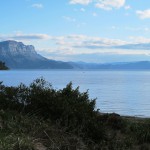
Wairoa is distinguished by two natural features: it is the principal access point to Te Urewera national forest with its immense Lake Waikaremoana (Sea of Rippling Waters), an attraction for nature lovers and freshwater fishers; and it lies at the mouth of the Wairoa river.
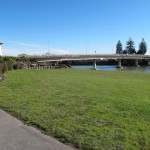
Wairoa is also known for one man-made feature, an elegant bridge which crosses the river for the only access to the eastern shore and beaches on the #2 Highway. The Bridge appears on everyone’s web site and the town brochures.
Once a year, the town hosts a demanding team athletic event involving running, biking and kayaking the marathon-like distance around the lake. The rest of the year it gives the local ranchers of sheep and cattle a place to gather, shop, eat and drink. The deployment of the police throughout the evening for sobriety tests at major watering holes testifies to the limits of entertainment. The quiet three-block long business district along the lovely riverside park testifies to the placid character of the town.

To get here, we drove the long tortuous Highway 2 through the scrunched hills of the volcanic landscape, dotted with grazing sheep and cattle, as well as the undulating valleys where the land briefly flattens.

When we arrived at Wairoa, we checked into one of the two hotels in town (whose websites display The Bridge), then searched for a place to have a well-earned dinner. There were several fish and chip joints on the main street tailored more for takeaways than a sit-down comfy meal, and a quiet cafe that looked promising. But we were also directed to try the Club. Fortunately, we did.
There are actually two ‘private’ clubs here. One sits right on the main highway, fronting the river and adjacent to The Bridge. Established for the working man, mainly the ranchers and farmers of the area, this one is open to visitors. The other club serves the upper-crust, at the opposing end of the town. Why? “So we could gather with our friends and people like us,” as one local put it. Even in a small community, you can find class distinctions and social cliques.
Once buzzed through the entry door of the working man club, we were greeted by a zaftig bartender. She guided us through the process of signing in to the great book so we could have a pass that no one ever looked at again, and instructed us how to get drink from the bar or order food from the separate dining room. The bar, featuring a dozen draught beers and local wines at discount prices, faced a huge room with scattered tables and patrons. Most of the people clustered in one section of the room where they studiously observed a dozen screens displaying racetracks from across Asia – thoroughbreds running in Singapore, trotters in Australia and greyhounds from who knows where. Through a doorway, another large room connected to two others: the smoking room, a partly open patio with its own set of screens displaying races, and a simple whitewashed dining room set for a hundred potential diners. It seemed you could accommodate the whole adult population of the town in this one club.
So we took our glasses of East Coast wine and local Black Duck Porter into the dining room to enjoy some food off their diner-style menu, along with twenty or so scattered diners. And that would have been the end of an interesting, but forgettable evening…until we ventured out into the outer “smoking” patio.
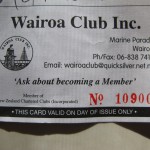
There, three boisterous couples, none of whom were actually smoking, had clearly been enjoying the evening so far. And the day too, for they had all turned out earlier to see the country’s Prime Minister, John Key, who for some reason decided to visit this tiny town. Everyone had come in from the surrounding farms, and started the socializing a lot earlier in the day than usual.
We were hailed right away, and invited to join their party. The drinks flowed, and they would not let us pay for any of them. We learned that all three couples were sheep and cattle ranchers, but they were doing very well with the accelerating exports of their meats all over Asia. They were all well-educated and had travelled quite a bit, to parts of the United States and around Europe. They insisted on strong education for their children also. After primary schooling, they sent the kids to private or boarding schools, partly because they could afford a top quality education, but also because the local options in a lightly populated region were not acceptable to them.
They proved to be conservative people – centrists we might say – whose rough livelihood had yielded a high level of good living, but with a culture of sharing the wealth with their fellow citizens: they fully accepted the universal health system and redistributive education funding of the country. Sure, it was a burden to pay for private schooling and the public options at the same time, but they accepted the need. When the conservative party PM and businessman Keys earlier that day called for improving education across the country, to elevate New Zealand’s achievement from 7th or so in the world even higher, they backed him fully.
So we talked of the economics of living there, and life in the United States. Their knowledge of U.S. politics matched their zeal in finding out more about how we functioned (or failed to function) in that arena, as well as comparisons to our healthcare and education systems. We talked sports, for they shared a passion for tennis and Roger Federer, and we learned more about the local passion for rugby.
The conversation continued till sometime after the club closed, and even then more drinks magically appeared. When we finally left, we had several invitations. One woman, who was the owner of the only book shop (and stationery store/card shop/toy store/etc) in town, invited us to come by the next day. When we did, she directed us to the best place for breakfast, and we exchanged contact information so we could stay in touch. Another couple, a town councillor and his wife, actually invited us to stay at their farm the next night, even though we had already paid two nights at our hotel. So, feeling more like members than strangers, we found our way back to our hotel and went to sleep.
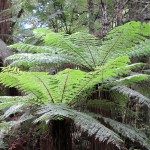
The mild sunshiny next day was our chance to visit the famous lake and do some tramping. To get there, we wiggled along another sinuous road amidst more hills dotted with yet more sheep and cattle.
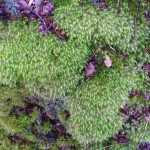
We knew you could hike a circuit of the lake in several days, but the water seemed to vanish into the horizon, limned by densely forested hills to the east and sheer sandstone cliffs to the west. Our three hour hike went away from the lake through cool damp rainforest, first up a 1000 feet to a secondary lake that fed this one, then to one of the many waterfalls up here.
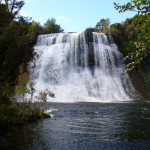
The falls featured an impressive downflow of a hundred feet, thunderously violent on one side and strangely delicate on the other.
On the way back down, in ebbing light, we were lucky to find the correct turns to the home of the town councillor, at the end of a long wooded track off the main road. He and his wife greeted us warmly – she emerged from the house, he roared up on a motorcycle behind us trailed by a quartet of muddy dogs – though we had arrived without being able to confirm their invitation from the night before.

They guided us through the richly panelled, century-old farmhouse that had been the family’s for 70 years, pointing out the graceful stained glass, the ponderous wood furnishings, the molded iron ceilings which still boasted cracks from the 1931 earthquake, and the golf ball used to repair the fallen chandelier knob. And they treated us to drink and treats that kept appearing from the kitchen somehow.
Though we spoke of our own distinct worlds, of tending new-born lambs or caring for aging parents, we felt we had bridged some trans-Pacific gap, for we talked familiarly like old companions sharing the latest news. By the time the two of us left, we shared with them mutual offers to meet up again. Certainly, we regretted departing the area at all to continue our trip around the East Coast.
That night was anti-climactic. We returned to the Club to watch the big rugby match between the NZ All-Blacks and the Australian Wallabies. None of our new friends were there as they were staying at home to enjoy the contest. We understood why. In the big room at the club, about thirty people, this time turned away from the horse races, sedately watched the Kiwis blank the Ozzies. In the most exciting moments, you might hear one of the members cheer quietly, and a brief collective intake of air, but it was hardly a festive air. Perhaps, as one of our new friends said, the most zealous had driven to Auckland to see the thing live, but the crowd shots from the stadium showed people little more enthusiastic than our crowd.
But it didn’t matter. We had already crossed a cultural Bridge to the fellowship, openness and hospitality of the people of Wairoa.
(And for more pictures from New Zealand, CLICK HERE to view the slideshow at the end of the New Zealand itinerary page.)




